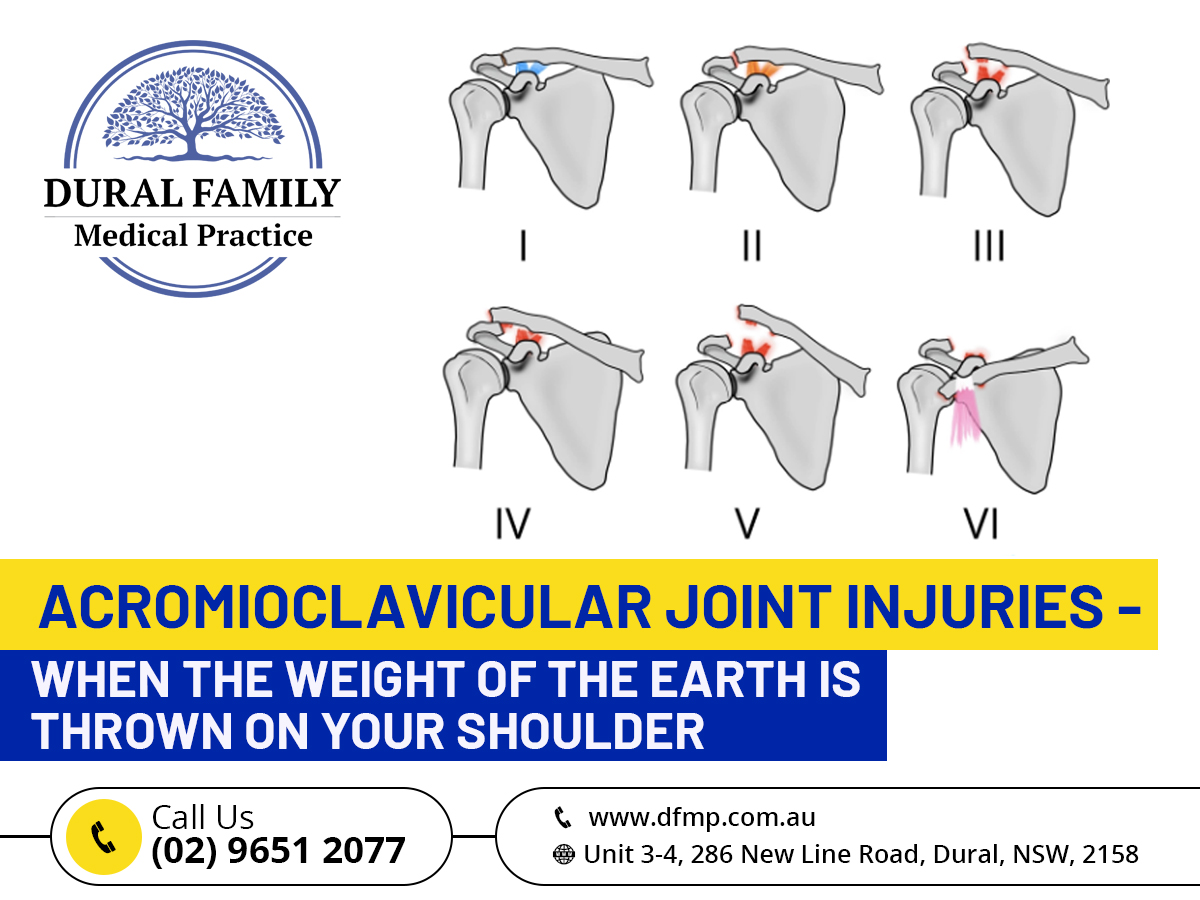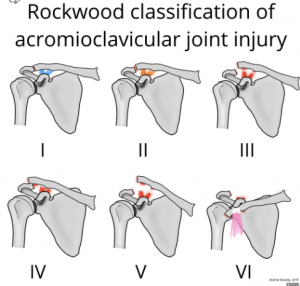same day & urgent walk-in appointments are available
(02) 9651 2077
3-4/286 New Line Road, Dural NSW 2158
OPENING HOURS
Monday
Tuesday
Wednesday
Thursday
Friday
Saturday
Sunday and Public Holidays
After Hours Phone Contact
8:00am - 6:00pm
8:00am - 6:00pm
8:00am - 6:00pm
8:00am - 6:00pm
8:00am - 6:00pm
8:30am - 12:00pm
Closed
137 425
Acromioclavicular Joint Injuries – When the weight of the Earth is thrown on your shoulder
By Alex Fielding, Physiotherapist and Chiropractor at Your Health Sport and Spine, inside the medical centre Dural Family Medical Practice The Acromioclavicular (AC) Joint Many of us have experienced a good tackle whilst playing sport. What’s that unpleasant tickle you’re feeling as your shoulder hits the ground you may ask? Well it could very likely…

By Alex Fielding, Physiotherapist and Chiropractor at Your Health Sport and Spine, inside the medical centre Dural Family Medical Practice
The Acromioclavicular (AC) Joint
Many of us have experienced a good tackle whilst playing sport. What’s that unpleasant tickle you’re feeling as your shoulder hits the ground you may ask? Well it could very likely be your Acromioclavicular (AC) joint screaming out in pain!
The AC joint connects your collar bone to your shoulder blade, it’s near the bony tip of your shoulder. It plays an important role in the function of your shoulder, particularly with shoulder flexion and abduction.
It’s also funnily enough one of the more common injuries we see when it comes to contact sports such as rugby and Australian football, but can also happen with any sort of trauma to the shoulder or fall onto an outstretched hand. In fact up to 40% of shoulder injuries have been reported as AC joint injuries in one study https://pubmed.ncbi.nlm.nih.gov/22869625/.
The rockwood classification system typically outlines 6 different types of AC joint injury. We find typically types 1-3 can be managed conservatively whilst types 4-6 generally need a trip down to the orthopaedic surgeon.

How do we treat it?
Like many injuries it really depends on the individual as well as the severity of the injury. To make matters slightly more challenging there isn’t really much in the way of robust evidence to assist in guiding us towards a gold standard treatment.
For our team of physios, chiros and exercise physiologists at YHSS at Dural Family Medical Practice, we typically find that the following seems to work.
Early phase
- RICE protocol
- Sling up to 48 hours
- AC joint compression taping
ROM/Early Strength Phase
- Transition from assisted to active range of motion exercises
- Isometric Strength Exercises
Strength Phase
- Increase in loads particularly consider lat pull downs, farmers carries, deadlifts and bench-press
Return to Sport
- Generally an increase on tolerance to impact and sport specific loads to the shoulder
- Knee to hand drops
- Medicine ball catches
- Progressive tackle bag work.
- Use of a thermoplastic AC joint guard
All in all it follows the simple process of “calm things down then build things up!”.
For more information on how our team can support you and yours, contact Your Health Sport and Spine on 9651 1395, or come along to the medical centre in Dural to see one of the doctors today. Dural Family Medical Practice Ph: 9651 2077
